The ballad of the wedge: the Cardin-Loyd wedge and its numerous offspring
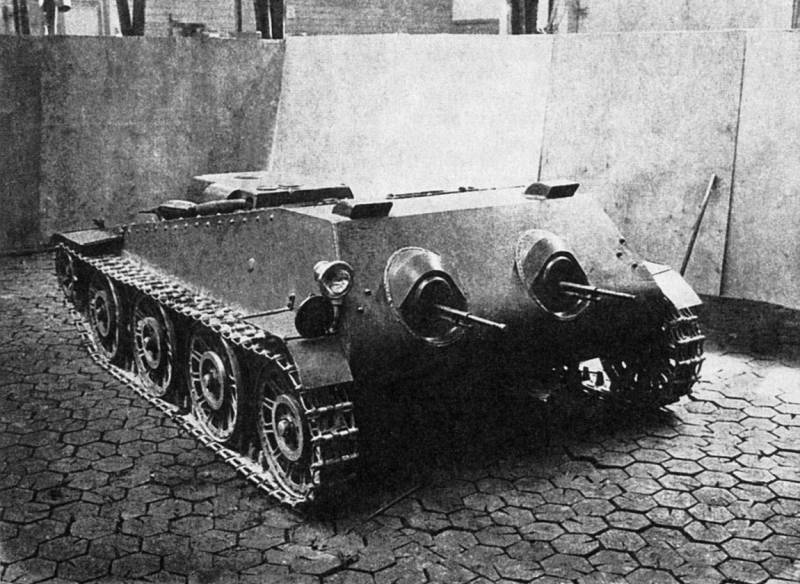
The PPG tankette is the last tankette of the USSR (PPG means "mobile machine gun nest", also known as "Object 217") - an initiative development created at the Kirov Tank Plant in Leningrad under the leadership of Zh.Ya. Kotina during the Soviet-Finnish war. It was not accepted into service. The crew of two was located lying down. Two machine guns had limited aiming angles, the speed was low - only 18 km / h
Revelations of John the Evangelist, 6: 8
History armored vehicles. The Cardin-Loyd wedge stems from an idea born in the mind of the British military engineer Major Giffard Martel. He built a single-seat tank in his garage “out of everything at hand” and demonstrated it to the War Office in the mid-1920s. The military generally liked the car, after which other companies presented their developments to the military, and competition began between them. One of them was Cardin-Loyd Tractors Ltd, founded by Sir John Cardin and Vivian Loyd, and then bought by Vickers-Armstrong. The specialists of this company looked at Martel's car and decided to create something better.
They made the first model single, like Martel's. But it immediately became clear that it was impossible to control such a machine and shoot at the enemy at the same time. And they were not the only ones who made such a mistake. The single one was the tankette of the Soviet designer Nalbandov, only 70 cm high, and the French tankette "Saba".
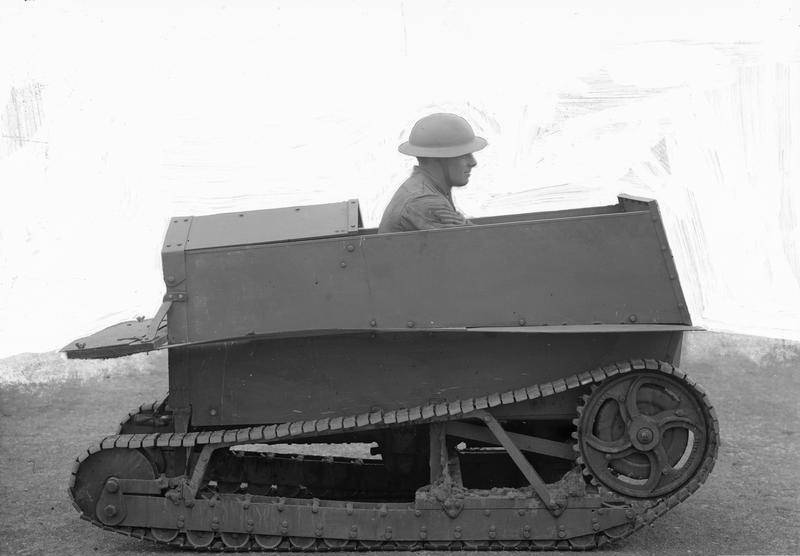
And this is how her driver was located in it and he was a shooter!
The British thought, and already in 1926 they created a two-seater version of their car ... It was the military who took it, so the production of the new car began in 1927 and then continued until 1935. Moreover, from 1933 to 1935, the production of these tankettes began to be carried out at the Royal Artillery Plants. Well, about 450 units were manufactured in England in total of "Cardin-Loyd" tankettes of various modifications. The British Army itself used at least 325 Mark VI tankettes. But there were other, earlier examples of this machine.
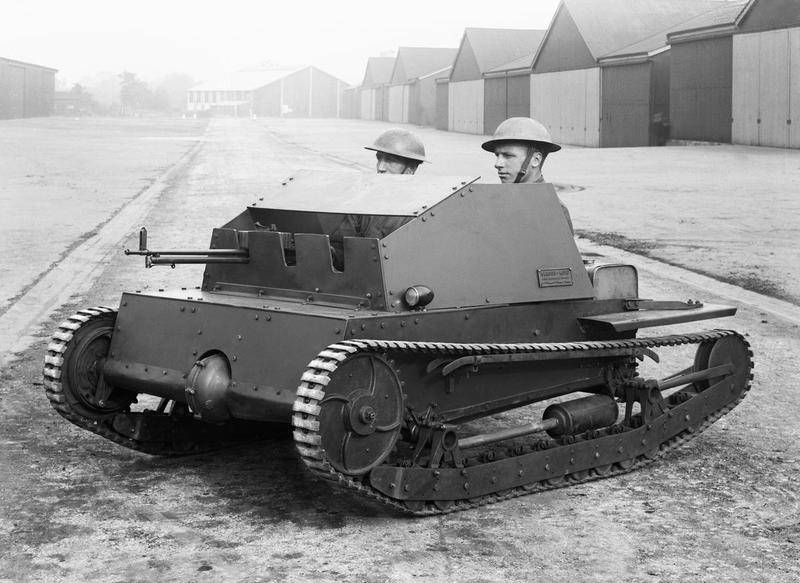
Wedge heel "Cardin-Loyd" Mk. IV of 1926 had a rectangular body, open on top, and was armed with one machine gun
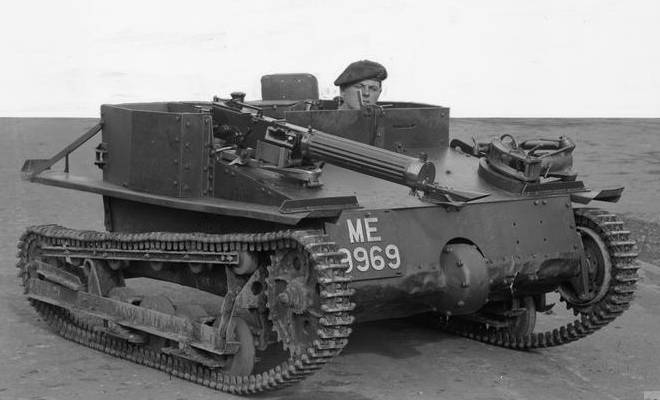
Wedge heel "Cardin-Loyd" Mk. IV
Actually, having a good chassis, the British military used it to the maximum. They tried to turn this tankette into a light artillery tractor, self-propelled mortar and self-propelled gun with a 47-mm gun.
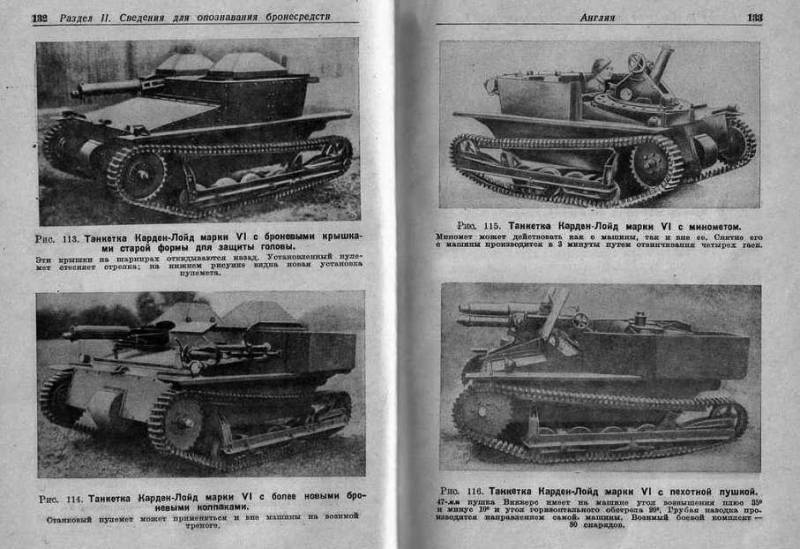
Various modifications of the Carden-Loyd tankette from the Heigl reference book: on the left with machine-gun armament and armored caps over the crew's seats; on the right - options with different weapons: at the top - installation with a Stokes mortar, at the bottom - in the ACS version with a 47-mm infantry gun
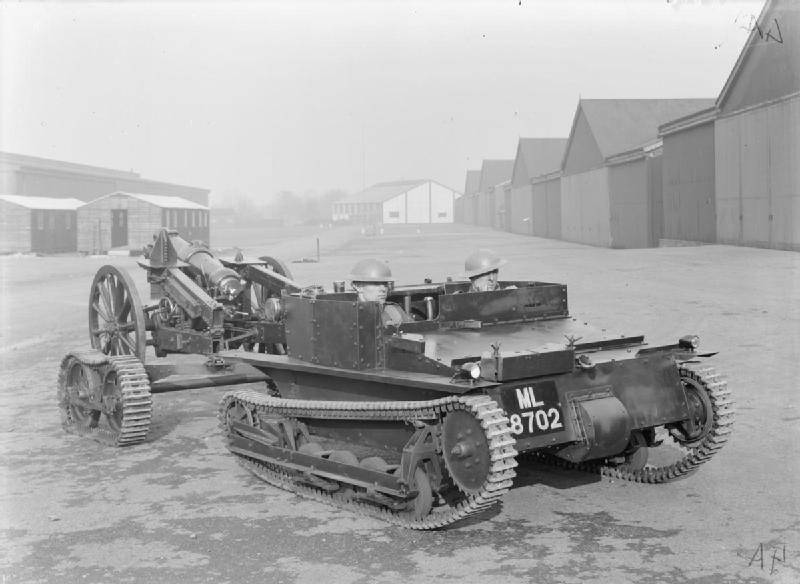
Carden-Loyd wedge as a tractor for a 3,7-inch howitzer
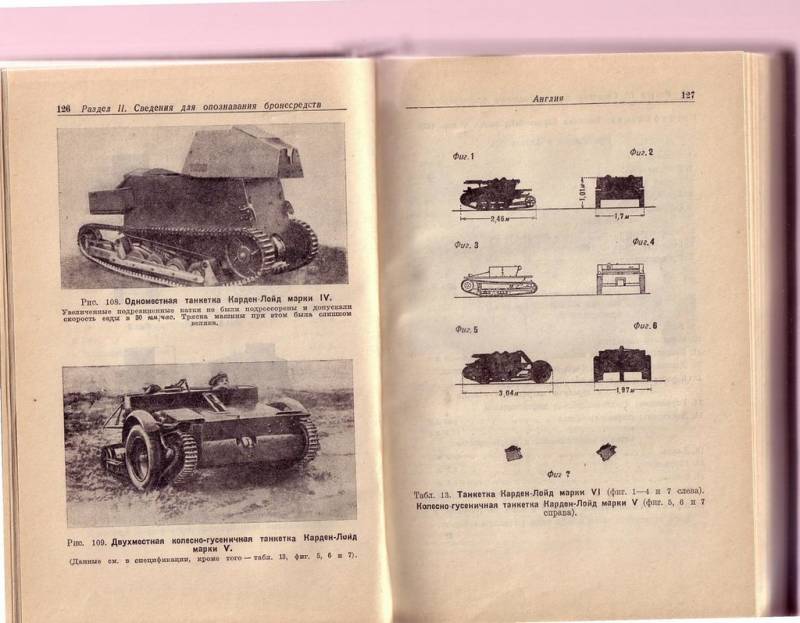
The British tried to turn the Carden-Loyd wedge into a wheeled caterpillar ... Page from the Heigl reference book
In 1929, Poland decided to purchase the Mark VI tankette and use it to develop its own TK tankette. First, the TK TKS model appeared.
Czechoslovakia also acquired three Mark VI tankettes in 1930 and a license to manufacture them, but began producing its own improved vz. 33 tankettes at the ČKD factory. As for the British design, Czech engineers assessed it as unsuitable for participation in modern warfare. Very few of them were produced, only 74 units.
The Soviet Union bought the most Mark VI tankettes, 20 units, as well as a license for their production, and also seriously altered the original version in the most serious way. The production of a new vehicle, indexed T-27, was launched at the Bolshevik plant in Leningrad. Well, in total, from 1931 to 1933, we built 3228 of these tankettes!
Italy also bought the English wedge. Several copies of it were made there under the designation CV-29, but then the Italians finalized this design and began to produce their own tankettes of the improved L3 / 35 model, and in two versions: a machine gun with two 6,5 mm machine guns, and a flamethrower with a machine gun and a flamethrower, the supply of fuel to which was transported in an armored trailer tank, which the wedge was supposed to tow. Tankettes of this type were actively used in battles. First, in Abyssinia (Ethiopia), where flamethrower machines, which caused panic horror among ordinary Abyssinians, showed themselves especially well, and in Spain, during the civil war, where Mussolini sent them to help Franco's nationalists. There they met with Soviet cannon tanks and demonstrated their complete inadequacy. However, in battles in mountainous terrain, their chassis proved to be very good. But they simply could not fight on the plain with cannon BT-5 and T-26, just like then in Africa to fight the British cannon tanks "Crusader" and "Matilda".
The Imperial Japanese Army also acquired six Mark VIb tankettes, field tested them, and found they were too small to be used. Therefore, the Japanese tried to develop their own version of the wedge and did so by creating the Type 94 Te Ke machine.
The Canadian Army bought 12 tankettes in batches of six in 1930-1931. They were used as training at the Canadian School of Armored Fighting Vehicles and for a long time were the only armored vehicles in the Canadian army, with the exception of a few old armored cars. They were never used in combat by the Canadian army.
It should be noted that the fashion for wedges has acquired an almost worldwide character. They were bought, albeit in small quantities, by France, Latvia (18 Mk. IV was purchased in 1935), the Netherlands, Bolivia and even the Kingdom of Siam. The French made the Renault UE armored ammunition carrier based on this tankette. Greece and Thailand bought the Carden-Loyd tankettes (there were about 60 of them), and they were also bought by Chile, China, the state of Manchukuo (20 Mk. VI), Finland and Portugal. Well, the Germans got acquainted with this tankette here in the USSR, and its design to a certain extent influenced the design of the first light German serial tank Pz. I. All in all, it was supplied to 16 countries of the world and became a kind of catalyst for progress in the field of creating light tanks.
After all, every military specialist who saw her, and even more so "went around", immediately began to understand all her shortcomings, which were more than obvious and, accordingly, caused a strong desire to correct them. The lack of a rotating turret, open top, weak armor - all this made me think about how to fix it all. But thicker armor, a turret and a stronger engine - all this added weight to the wedge, which means that the old chassis was no longer suitable for it, and a new one had to be developed. But, as they say - “there would be something to push off from, and then it will go further”, this is exactly what happened in the case of English tankettes.
It is interesting, however, that the projects of tankettes appeared not in England, but in the USSR back in 1919, when two projects of an "all-terrain armored machine gun" for the needs of the Red Army were proposed by a certain engineer Maksimov. According to the first project, it was a single-seat wedge with a mass of 2,6 tons, with a 40 hp engine. and armor with a thickness of 8 to 10 mm. The estimated maximum speed was assumed to be 17 km / h. The second project, called "Shchitonoska", differed from the first in that the driver (and also the shooter) had to be in it reclining, which made it possible to reduce its dimensions and weight. However, both of these projects were not implemented at that time.
Then in 1926-1929. in the USSR, five T-17 Lilliput tankettes were built - in fact, it was the Soviet tankette of the interwar period. But it didn't go into production.
In Europe, British innovation was generally viewed rather skeptically. It was not so in the USSR, where tankettes were actively promoted by M.N. Tukhachevsky, who in 1931 became the chief of armaments of the Workers 'and Peasants' Red Army. Before that, in 1930, on his initiative, an educational film "Wedge" was created, the script for which he wrote himself. According to the three-year program of tank building, from June 1926 to 1930 in the USSR it was planned to create a battalion of 69 tankettes ("escort machine guns" - as tankettes were called in our country at that time) and test them in practice.
As a result of these tests in 1929-1930. the project of the T-21 tankette appeared - also with a crew of two, 13 mm armor and the nodes of the T-18 and T-17 tanks. The project was rejected due to insufficient mobility of the vehicle. Projects were proposed for large tankettes T-22 and T-23, called "large escort tankettes." However, nothing came of it with these national projects at that time.
But on the other hand, in 1930, a commission headed by Khalepsky (head of the UMM) and Ginzburg (head of the engineering and design bureau for tanks) visited the UK, and it was she who acquired there 20 Cardin-Loyd tankettes and a license for their production in the USSR ... The production of the T-27 tankette was launched along this line. Moreover, in our country, as in England, a variety of weapons installation systems were tested on its basis: 37-mm and 76-mm guns, a flamethrower, Kurchevsky recoilless cannon was installed on a wedge, tankettes were parachuted off from a TB-3 bomber - in a word, tests the most varied were carried out.
T-27 tankettes took part in hostilities: they fought in Central Asia with the Basmachi, fought on the Karelian Isthmus and even at the beginning of the Great Patriotic War. Their only advantage was the ability to cross ... weak village bridges, that is, to act where no other tanks could pass. But even in this case, their armor no longer protected against the fire of anti-tank weapons and, in particular, the fire of any anti-tank rifles.
So on the T-27, the history of the tankette in the USSR both began and ended. But Japan became one of the most zealous supporters of the tankette, however, already with a rotating turret, and it was these machines that the Japanese actively used during the war in the rainforest zone.
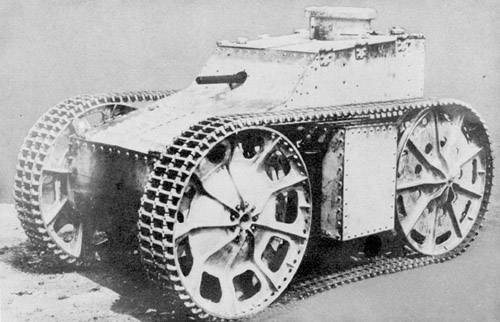
American tankette T-1
As for such a developed industrial power as the United States, in 1928 the Cunningham company developed its own single-seat tankette, which was distinguished not only by its extremely small size, but also by an original chassis. Instead of the usual multi-roller chassis used by the recognized leaders - the Martel and Carden-Loyd firms, American engineers came up with a chassis with four large-diameter road wheels, which made the wedge look like a small four-wheeled armored car. The front wheel was the driving wheel, the rear wheel was the guide wheel. The vehicle received the designation T-1, although most sources refer to it as the "Tank Development Chassis T-1". It was driven by a four-cylinder gasoline engine "Ford" A, with a capacity of 42 hp. The maximum thickness of the armor plates was small: 3,17 mm, which allowed it to withstand only small-caliber bullets. Armament T-1: 7,62-mm machine gun mounted in the frontal part of the hull. On trials in 1928, the Cunningham tankette proved to be a rather mediocre machine, although it was able to reach a speed of 31 km / h. However, in terms of other parameters, it was very much inferior to light tanks and was by no means very cheap! Later, the T-1 began to be used to test a new type of tracks (mostly rubber), since in this capacity it showed itself from the best side. However, in the end, the T-1 tankette remained in a single copy.
PS Color illustrations by A.S. Sheps.
To be continued ...
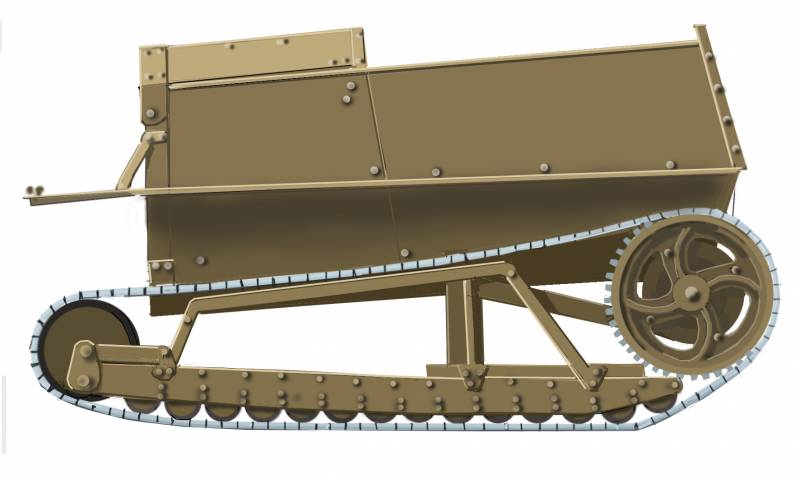
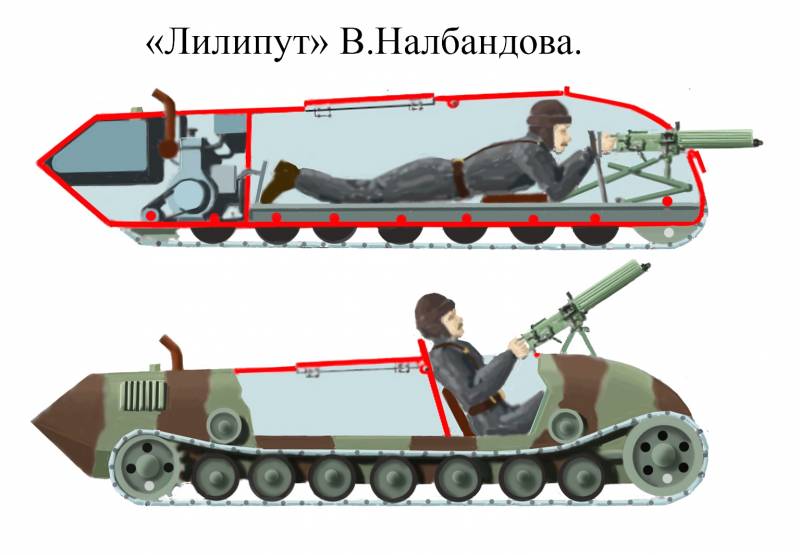

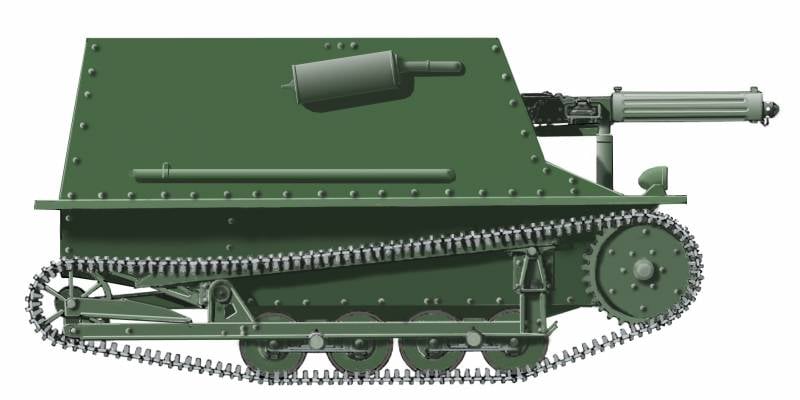
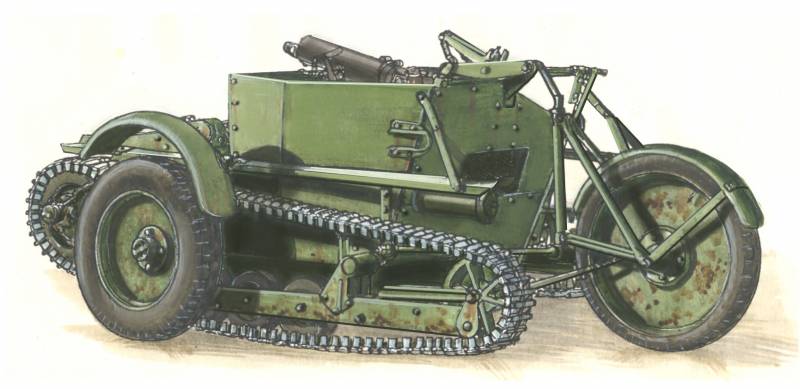
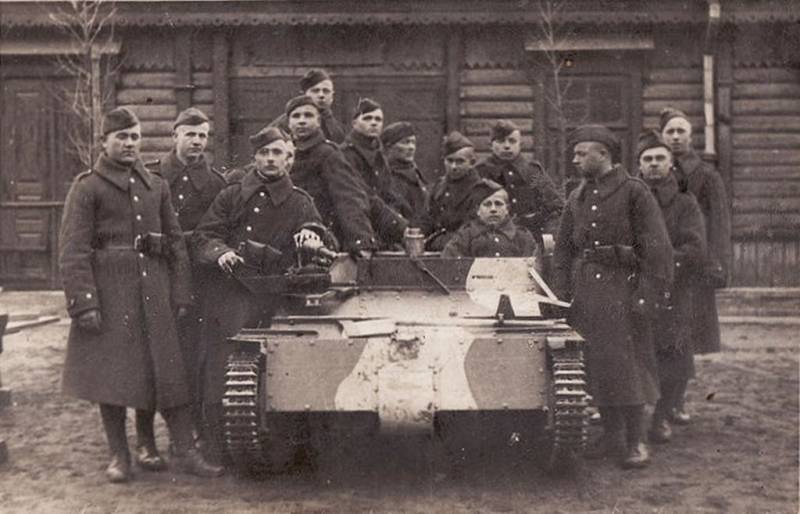
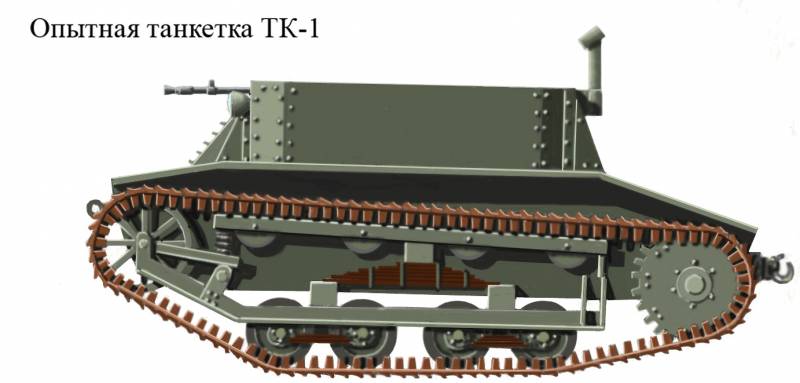
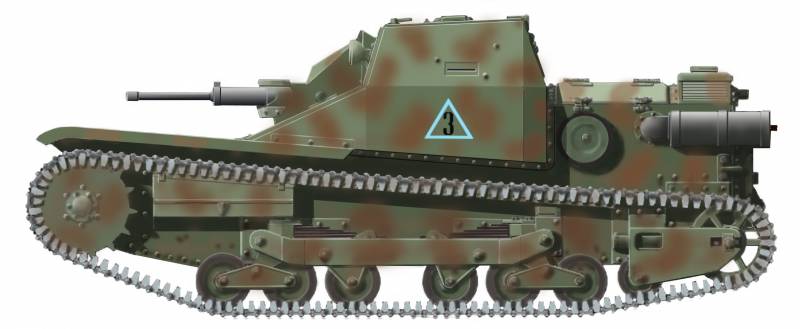
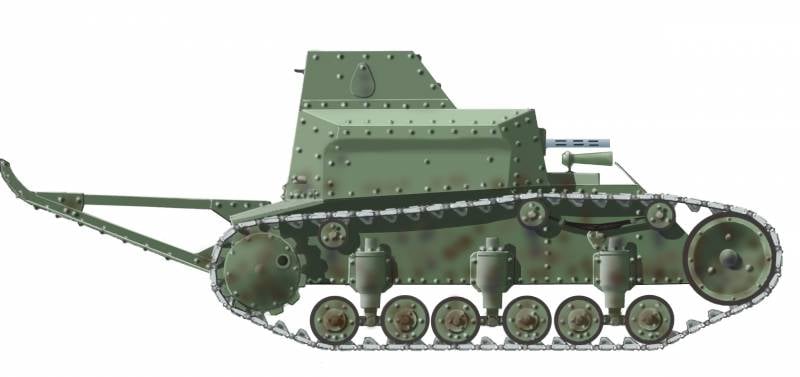
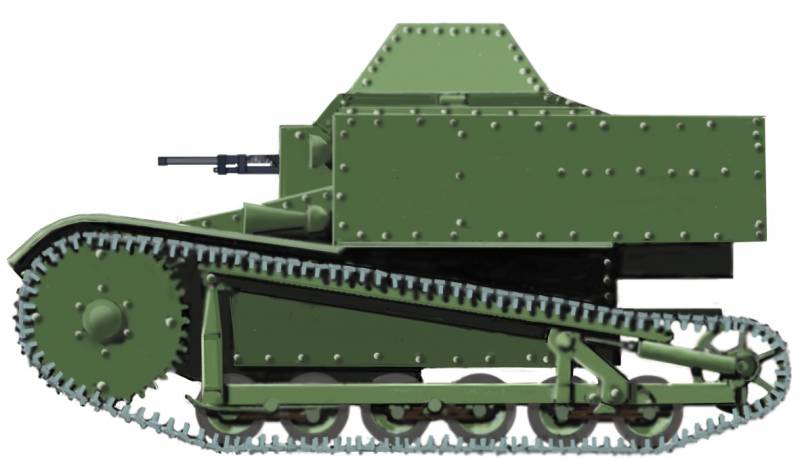
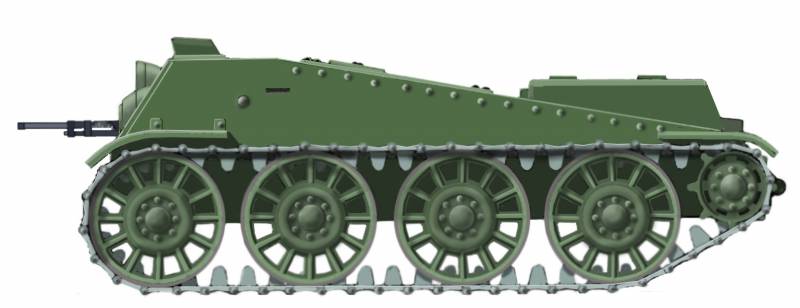
Information